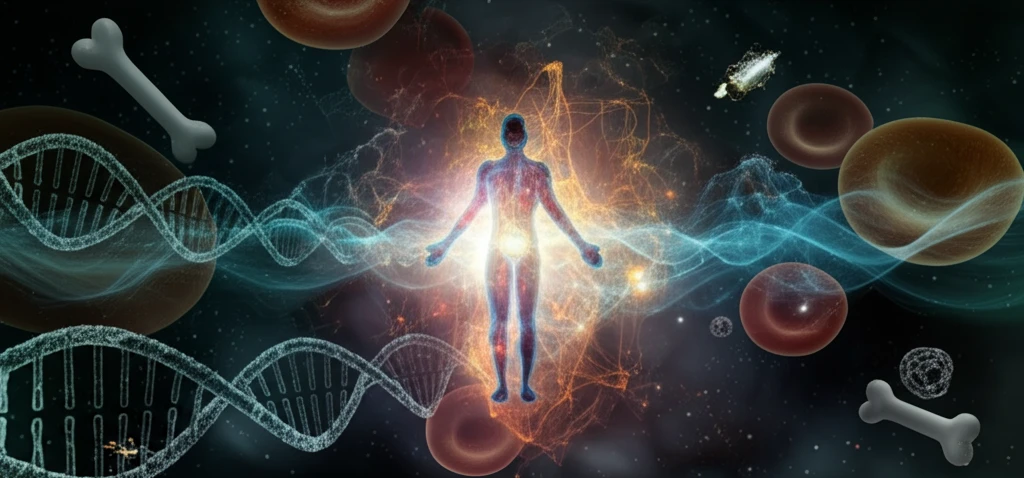
Unlocking the Secrets of Radioprotection: How a Novel Compound Could Revolutionize Cancer Treatment and Beyond
"Discover the groundbreaking research on GM2011, a thiol-based radioprotector, and its potential to transform cancer therapy, emergency radiation response, and space exploration."
Radiation therapy stands as a cornerstone in cancer treatment, yet its impact extends beyond malignant cells, affecting healthy tissues and creating a critical need for protective strategies. For decades, scientists have explored ways to mitigate these harmful effects, searching for compounds that can shield the body from radiation's destructive power. This quest has led to the investigation of radioprotectors, agents designed to reduce the damage caused by ionizing radiation, potentially revolutionizing not only cancer treatment but also emergency response scenarios and space exploration.
Despite extensive research and the testing of thousands of compounds, only a few radioprotectors have made their way into practical use. One notable example is amifostine (WR-2721), approved by the Food and Drug Administration. While effective as a scavenger of free radicals induced by radiation, amifostine comes with its own set of drawbacks, including significant side effects such as hypotension and vomiting. These limitations underscore the ongoing need for safer, more effective radioprotective agents.
In a recent study, researchers investigated a novel thiol-based compound named GM2011, focusing on its radioprotective capabilities and its potential to regenerate bone marrow following radiation exposure. This research, conducted at the Vinča Institute of Nuclear Sciences and the Institute of Medical Research, both at the University of Belgrade, offers promising insights into the future of radioprotection and its applications in various fields.
GM2011: A Promising New Radioprotector

The study aimed to evaluate the survival rates of laboratory rats exposed to radiation, along with examining the cellularity of their bone marrow and the presence of multipotential mesenchymal stem cells (BM-MSCs). These BM-MSCs are crucial for the regeneration of the hematopoietic system, making them a key indicator of radioprotective effectiveness. Rats were subjected to a Cobalt gamma source at 6.7 Gy, and the treated group received GM2011 before and after irradiation. The control groups included sham-irradiated animals and those irradiated without treatment. After 30 days, the animals were examined, and their bone marrow cells were analyzed.
- Increased Survival: GM2011 boosted survival rates significantly.
- Bone Marrow Regeneration: GM2011 aided in the recovery of bone marrow cells post-irradiation.
- CFU-F Preservation: The compound helped maintain the frequency of CFU-F, crucial for marrow function.
- Reduced Damage: GM2011 mitigated the suppressive effects of radiation on bone marrow.
The Future of Radioprotection
The study's findings suggest that GM2011 acts as a highly effective radioprotector, even at relatively high radiation dosages. Its ability to promote the recovery of BM-MSCs and maintain their counts supports its potential as a valuable tool in mitigating radiation-induced damage. While further research is needed to fully understand its mechanisms and optimize its use, GM2011 holds promise for improving cancer treatment outcomes, protecting individuals in radiation emergencies, and enabling safer space exploration.
